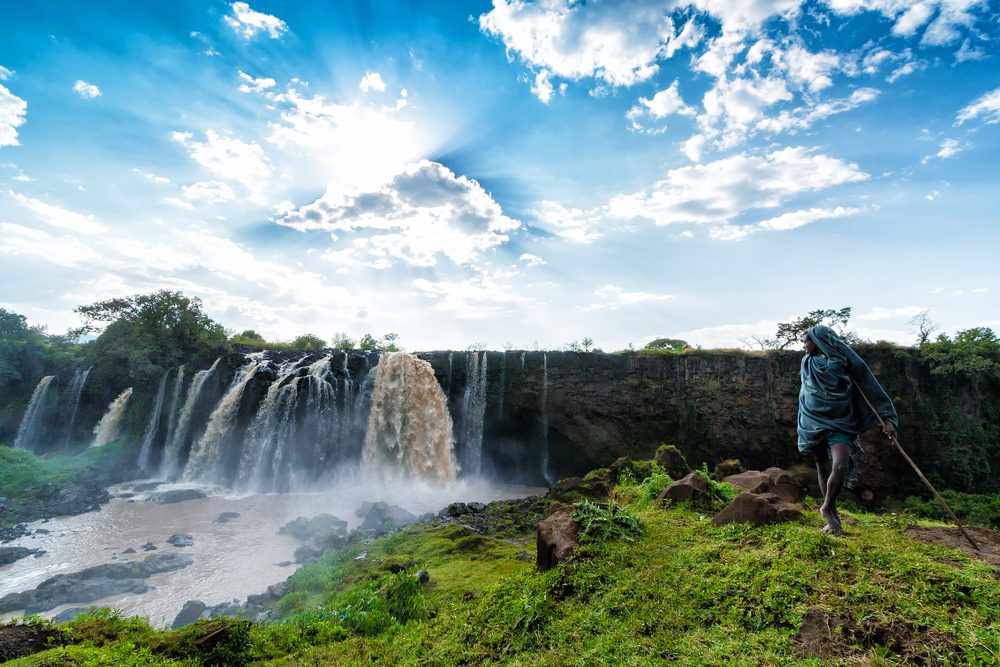What is the source of the River Nile? While that might sound like a straightforward question, the origin of the longest river on planet Earth has befuddled people for thousands of years. Even today, in an age of prolific satellites and geophysical know-how, the romantic conundrum of the Nile’s source is still not as simple as you might assume.
The simple answer is that the River Nile has two main sources: the Blue Nile from Ethiopia – which contributes two-thirds of all the Nile discharge – as well as the White Nile from the African Great Lakes and beyond. However, if we take a few steps back in history, we’ll see things get a little less clear-cut.
The ancient Romans had the proverb “Nili caput quaerere,” which is Latin for “to search for the head of the Nile.” It was used to describe a mad endeavor, striving for the unattainable or impossible.
Never one to turn down a challenge, the Romans did actually attempt to find the source of the Nile in a mission launched by emperor Nero in 60 to 61 CE. With the help of Ethiopian guides, a small group of the emperor’s personal guards headed down through Africa along the Nile into the unknown.
It’s unclear where they ended their investigation, although it’s said they did reach a significant body of water they believed was the source. Some say this was a gorge near Juba in present-day South Sudan, while others believe they reached further south in Uganda around the Murchison Falls.
Either way, they ultimately failed to solve the mystery. Nero died by suicide in 68 CE, and it looks like the quest was largely swept from the agenda after they ruled out the possibility of invading Africa beyond Roman Egypt.
The Blue Nile Falls is a waterfall on the Blue Nile river in Ethiopia. Image credit: Craig Schuler/Shutterstock.com
Prior to the Romans, the Ancient Egyptians were keen to find the origin of the Nile – not least because the civilization relied on its waters to nourish their soil and serve as a transportation route.
It’s believed they traced the Nile as far as Khartoum in Sudan, explaining its source as the Blue Nile from Lake Tana, Ethiopia. An expedition ordered by Pharaoh Ptolemy II Philadelphus, who ruled Egypt in the 3rd century BCE, reportedly determined the source of the Blue Nile may originate in the Ethiopian mountains.
The insight of the Blue Nile was on the right track, but there’s no evidence the ancient Egyptians ever explored the other key piece of this puzzle, the White Nile.
Today, it’s largely agreed that the Nile has two sources: the Blue Nile and the White Nile, which meet in the Sudanese capital Khartoum before continuing northwards into Egypt. The Blue Nile emerges from the east in Ethiopia’s Lake Tana, while the White Nile appears from around Lake Victoria exiting at Jinja, Uganda.
This is why Lake Victoria, Africa’s largest lake by area, is often credited as the source of the Nile. However, even this point is more complex than it first appears. Writing in the magazine Geographical in 2016, renowned adventurer Sir Christopher Ondaatje explains that Lake Victoria itself is a reservoir fed by other rivers.
In 1996, Ondaatje ventured on an expedition through Africa to locate the source of the Nile river, and found that the waters of Lake Victoria flow into Lake Albert. The White Nile doesn’t directly flow out of Lake Albert but from the Kagera River and Semliki River, which stem from the Ruwenzori Mountains in the Democratic Republic of Congo. Ultimately, he argues, the White Nile can be directly traced back to the Kagera River and Semliki River.
“The Ruwenzoris are just as important a source of Nile water as is Lake Victoria,” he writes.
All told, it’s clear that the River Nile has no single origin and it’s fed through a complex system of rivers and other bodies of water. While it’s a romantic notion that the source could be pinpointed on a map, the truth is rarely ever that simple.
Source Link: The Source Of River Nile Still Mystifies After Thousands Of Years
